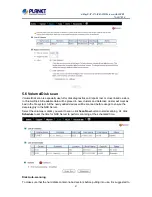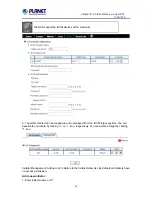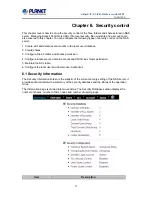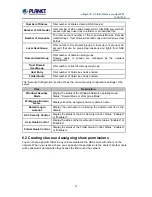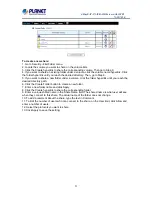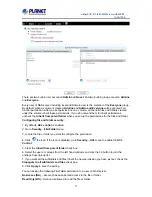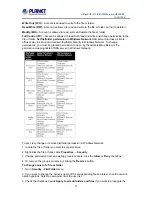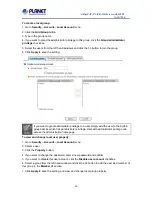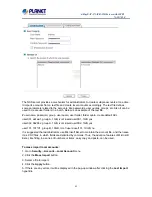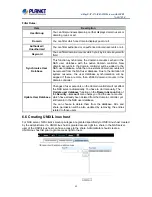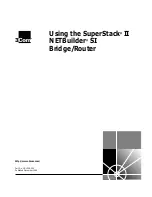
4-Bay SATA NAS RAID Server with iSCSI
NAS-7410
48
perform disk-scanning before taking such actions as creating a volume, expanding a volume,
migrating data or assigning a hot-spare disks. If disk auto-scanning is enabled, the NAS server
can scan disks automatically when you perform these actions. If the hard disks have ever been
scanned in the last 30 days, the auto-scanning will be skipped so that the auto-scanning will not be
activated too often.
To enable the feature, please click the
Configure
hyperlink on the
Volume
→
Scan
page. Set the
Disk Auto-scanning
item to
Enabled
.
5.7 iSCSI (IP SAN)
iSCSI, (Internet Small Computer System Interface), an Internet Protocol (IP)-based storage
networking standard for linking data storage facilities. By carrying SCSI commands over IP
networks, iSCSI is used to facilitate data transfers over intranets and to manage storage over long
distances. iSCSI can be used to transmit data over local area networks (LANs), wide area
networks (WANs), or the Internet and can enable location-independent data storage and retrieval.
iSCSI Target
Follow the steps below to configure the iSCSI target service on the NAS server.
1. Click “iSCSI” tab and Click “Add” to create an iSCSI target on the NAS.
2. Enter the iSCSI target information for configuration
Item
Description
Target User Name
The name for the target.
iSCSI Target Lun
Select to create an iSCSI target with a mapped LUN and enter the
size of LUN.
Comment
The comment for the target.
iSCSI
Authentication
None or CHAP.
Target User Name
The name for target authentication.
Password
The password for target authentication.
Mutual CHAP
Two-way authentication mode.
Initiator Name
The name for initiator authentication.
Password
The password for initiator authentication.
CRC/Checksum
Data or Header Digest.
3. Apply the settings. Now, an iSCSI LUN is a logical volume mapped to the iSCSI target. The
target and LUN are shown on the list under the “iSCSI” tab.














